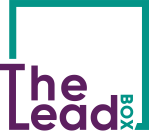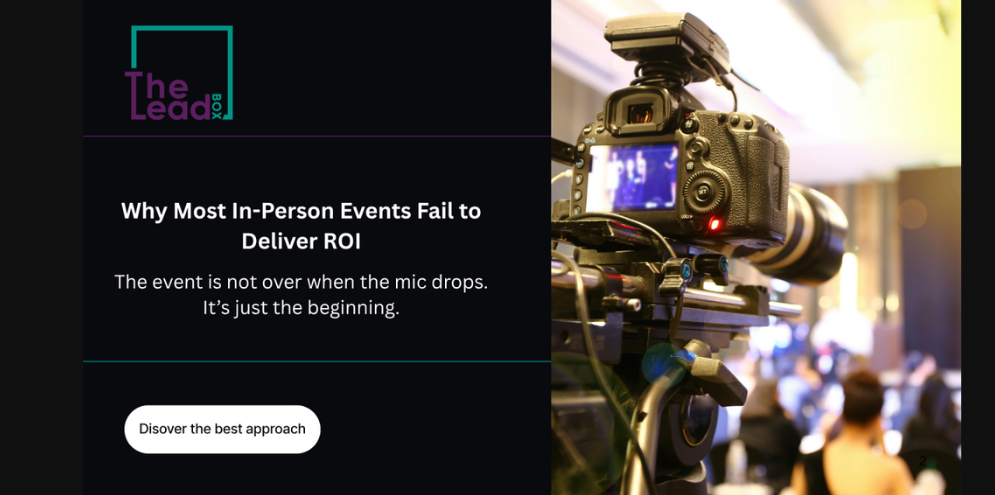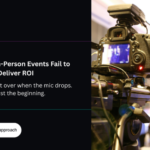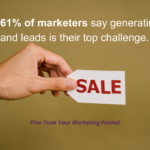B2B events remain one of the most powerful channels for B2B engagement. They offer a unique opportunity to build relationships, showcase offerings, and create lasting brand recall. However, despite the high investment, many marketers are struggling to convert event buzz into business.
After being part of dozens of CXO roundtables, product showcases, tech conferences, and customer connect programs, we’ve noticed a pattern: marketers are missing key post-event levers to ensure ROI.
Let’s break it down.
Where Most Marketers Go Wrong
- No Post-Event Follow-Up After the handshakes and selfies, most marketers go silent. No emails, no calls, not even a LinkedIn request. According to Splash’s 2023 Event Marketing Report, 47% of marketers fail to send post-event follow-ups within 3 days, significantly reducing the chance of conversion.
- Events Are High-Touch. So Should Be Your Marketing. Events are designed to be intimate, personal, and direct. Yet, many marketers treat them like mass campaigns. Failing to follow attendees on LinkedIn or personalize post-event communication is a missed opportunity to nurture leads meaningfully.
- No CSAT or Feedback Loop. If you’re not asking, “How did we do?” you’re missing insights gold. Very few teams send Customer Satisfaction (CSAT) or quick feedback forms after events. Not only do you lose out on improvement inputs, but also the chance to re-engage attendees subtly.
- No One Picks Up the Phone. One of the most shocking patterns: marketers don’t call their leads. A simple 10-minute call post-event can open doors to demos, deeper interest, or referrals. Gartner notes that B2B buyers complete 57% of their decision-making before contacting sales. Catching them early post-event can fast-track that journey.
- The Wrong ICP Attended Many prospects attending the event may not even use the product category being promoted. But instead of nurturing them slowly, marketers drop off or push hard both strategies backfire. For those not using the tool/product, the goal is not to sell immediately but to educate and qualify over time.
- No Nurture Plan Exists. Events should feed into a 30-60-90 day nurture strategy. Yet, many teams have no clear roadmap after the applause dies.
What Smart Marketers Are Doing to Drive ROI from Events
Here’s what high-performing B2B marketers are doing differently:
Pre-Event Personalization
- Sending personalized invites from key stakeholders
- Pre-booking 1:1 meetings with top ICP attendees
- Identifying gaps in attendee intent vs. solution fit
Real-Time Engagement Tracking
- Using QR-based check-ins and booth scans to track who interacted
- Mapping those interactions to CRM and triggering relevant post-event campaigns
Post-Event Follow-Up Cadence
- Day 1: Thank-you email with highlights
- Day 3-5: LinkedIn connect + personalized message
- Week 1: Call or email to set up a demo
- Week 2: CSAT + newsletter signup
Segmented Nurturing
- Hot leads: Move to sales pipeline
- Cold leads: Enter into long-term content journey (webinars, whitepapers, etc.)
- Non-relevant leads: Educate and explore future needs
Event Content Repurposing
- Turn panel discussions or keynotes into short-form LinkedIn videos
- Share testimonials or attendee reactions as social proof
- Use photos and speaker quotes to create thought leadership content
ROI from Events—A Reality Check
Let’s not sugarcoat it. Events are expensive.
- Bizzabo reports that the average cost per attendee at an in-person B2B event ranges from $500 to $1,500.
- Yet only 23% of event marketers say they can directly measure ROI from these investments (Skift Meetings, 2024).
With tighter budgets and higher expectations from CMOs, you can’t afford to let leads go cold.
The event is not over when the mic drops. It’s just the beginning.
To generate real ROI from in-person events, marketers need to think like salespeople, act like relationship managers, and measure like analysts. The brands that master this lifecycle will win the long game, while others will keep wondering where the leads disappeared.
Let’s not waste another handshake.




